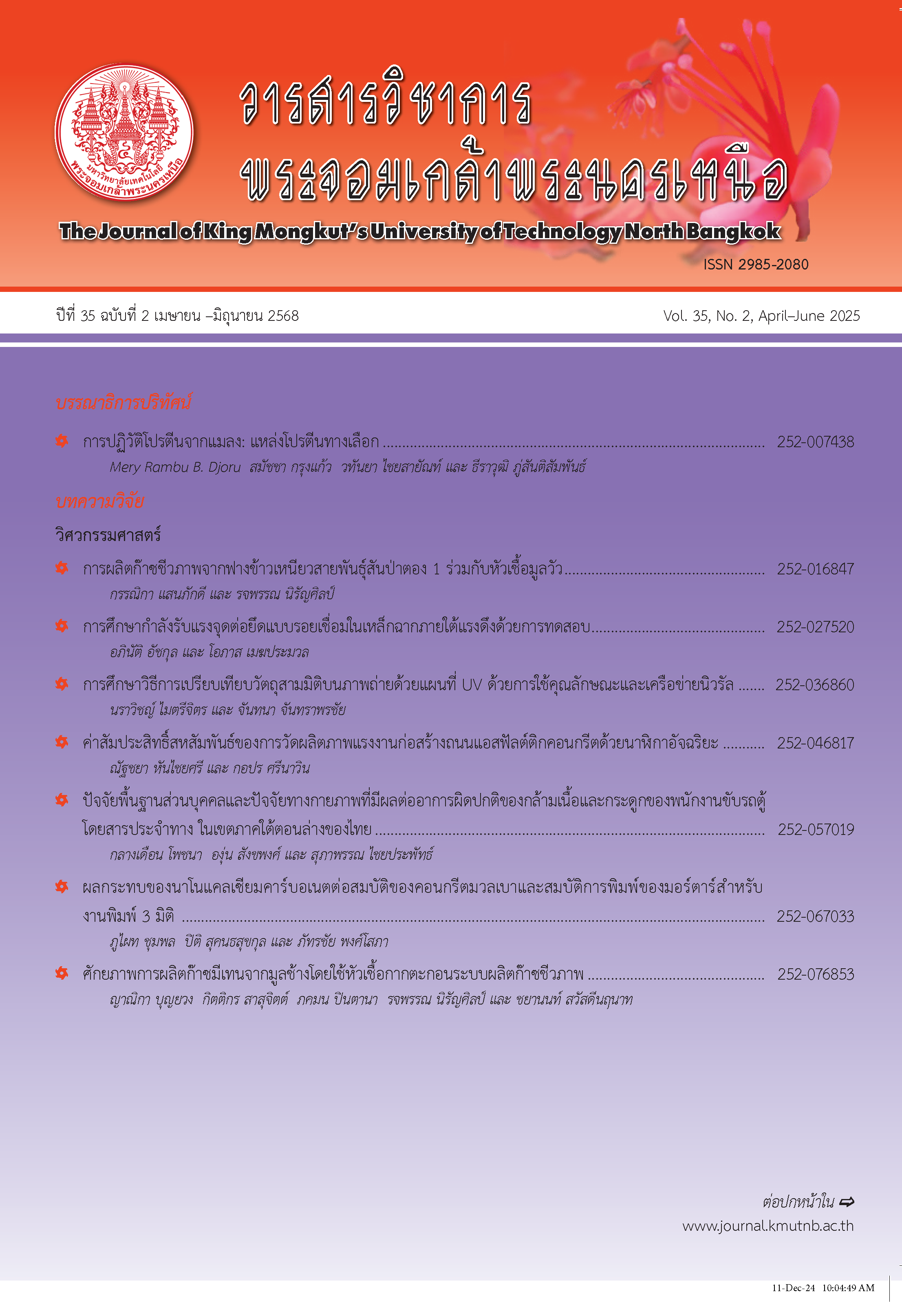A Study of Strength and Behavior of Angle Welded Connection by Full-scale Tests
Main Article Content
Abstract
According to American Institute of Steel Construction Specification (AISC), it is not necessary to take into account the effect of eccentricity for the design of welded end connection of single angle, double angle, and similar members. However, the eccentricity in the angle may affect strength of the connections, especially welded connection at the end of single angles in which out-of-plane bending naturally occurs. This research aims to study the effects of eccentricity on the strength and behavior of the welded connection in the angle tension member by experiments. Specimens included single and double angles with balanced and unbalanced weld arrangements and various lengths and gauges of the welded connection. Every specimen was designed so that weld rupture would be the governing limit state. The results showed that unbalanced weld arrangements, increased gauge lengths due to sizes of angles, and out-of-plane bending could altogether reduce weld rupture strength from nominal value up to 20 %. In addition, lengths of welds used in the research, which were less than 100 times weld thickness and were deemed consistent with the number within the recommended values by AISC, results in weld strength being 20% below the predicted values in many cases.
Article Details

This work is licensed under a Creative Commons Attribution-NonCommercial-NoDerivatives 4.0 International License.
The articles published are the opinion of the author only. The author is responsible for any legal consequences. That may arise from that article.
References
American Institute of Steel Construction (AISC) (2016), Specification for Structural Steel Buildings, American Institute of Steel Construction, Chicago, IL.
W.H. Weiskopf and M.Male, “Stress distribution in Side-welded joints,” Journal of the American Bureau of Welding, vol. 9, pp. 23–48, 1930.
S.C. Hollister and A.S. Gelman, 1932, “Distribution of stresses in welded double Butt-strap joints,” Journal of the American Welding Society, vol. 11, pp. 24–31, 1932.
G.J. Gibson and B.T. Wake, “An investigation of weld connections for angle tension members,” Journal of the American Welding Society, vol. 21, no. 1, pp. 44–49, 1942.
L. J. Butler and G. L. Kulak, “Strength of fillet welds as a function of direction of load,” Welding Journal, Welding Research Supplement, vol. 50, no. 5, pp. 231s–234s, 1971.
A. M. Kanvinde, B. V. Fell, I. R. Gomez, and M. Robert, “Predicting fracture in structural fillet welds using traditional and micromechanical fracture models,” Engineering Structures, vol. 30, pp. 3325–35, 2008.
A. M. Kanvinde, I. R. Gomez, M. Robert, and B. V. Fell, “Strength and ductility of fillet welds with transverse root notch,” Journal of Constructional Steel Research, vol. 65, pp. 948–958, 2009.
P. E. Regan and P. R. Salter, “Tests on Welded-angle tension members,”The Structural Engineering, vol. 62B, no. 2, pp. 25–30, 1984.
Y. Wu and G. L. Kulak, “Shear lag in bolted single and double angle tension members,” Department of Civil Engineering, University of Alberta, Edmonton, Alta. Structural Engineering Report No. 187, 1993.
M. Petretta, “An investigation of the shear lag effect in welded angle tensile connections,” Master of Applied Science Thesis, Department of Civil Engineering, University of Toronto, 1999.
H. T. Zhu, M. C. H. Yam, A. C. C. Lam, and V. P. Iu, “The shear lag effects on welded steel single angle tension members,” Journal of Constructional Steel Research, vol. 65, pp. 1171–86, 2009.
Standard Test Method for Tensile Properties of Plastics, ASTM d638-02a, 2013.
Specification for Carbon Steel Electrodes for Shielded Metal Arc Welding, ASME Section II c sfa-5.1/sfa-5.1m, 2010.
O. Mekpramual, “Investigation of strength of angle welded connection under tension by Full-scale tests,” M.S. thesis, Department of Civil Engineering, Faculty of Engineering, King Mongkut’s University of Technology Thonburi, 2014 (in Thai).

